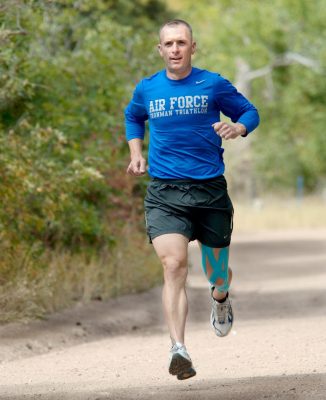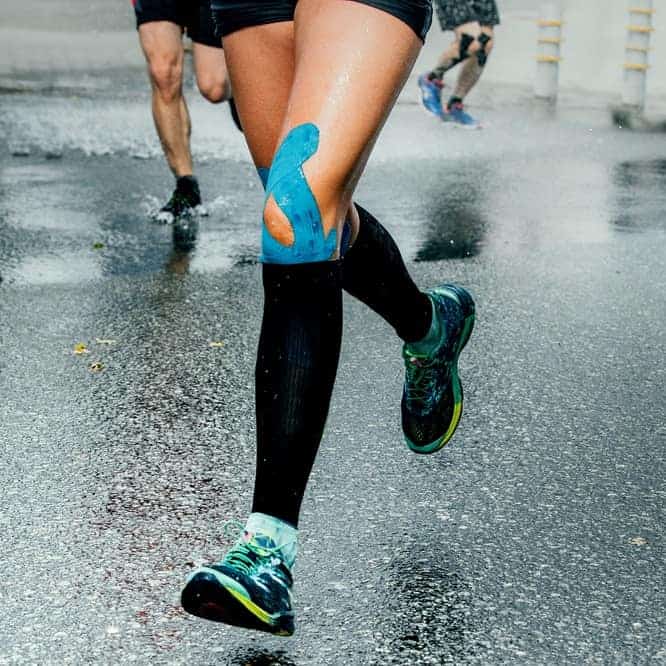Blog
The Ultimate Guide to Treating and Preventing Runner’s Knee Injuries
A Few Stats About Running Knee Injuries
According to surveys, at any time, roughly 1 in 5 runners will suffer from knee injuries. Polls also show that approximately 80 percent of runners get injured every year.
The bulk of injuries tends to afflict the knees, feet, calves, shin, and ankles. Other weight-bearing limbs and regions, such as the thighs, hips, and the back are also prone to injury.
Also known as Patellofemoral Pain Syndrome, or PFPS for short, runners knee is irritation of the cartilage on the underside of the patella (the kneecap), which is located in the patellar tendon and connects to the quads muscle group, the most powerful group in the body.
Runners’ knee occurs when the kneecap tracks out of alignment due to several reasons. Over time, this cartilage can wear down, resulting in debilitating pain.
This notorious knee injury is the most common affliction among runners—from all training backgrounds. Surveys show that about 40 percent of running injuries are knee injuries—and runners knee makes up a large percentage.
In fact, according to a runnersworld.com poll, about 16 percent of runners reported suffering from knee pain in the past year.

Symptoms of Runner’s Knee
The main symptom is a tender and constant pain behind or around the kneecap, typically on the front of the knee, just under the bottom edge of the kneecap.
The pain gets particularly worse when:
- Running downhill
- Descending the stairs
- After prolonged sitting
- Squatting
Causes of Runner’s Knee Injuries
The leading causes of runners knee tend to be different from one runner to the next. Some of these include:
- Weak glute, hip, or quad muscles
- Overpronation, which is the excessive inward foot rolling during a foot strike.
- Muscle imbalances
- Too much downhill running
- Faulty biomechanics,
- Improper footwear,
How to Treat Runner’s Knee Injuries
- First, decrease your running volume by half, avoid running on consecutive days, or take a break from the sport altogether.
- Next, ice the affected knee for 10 to 15 minutes post-run, or three to four times a day.
- For more aggressive treatment options, use a knee brace, kinesiology knee tape (check our article related to this), take anti-inflammatory medications.
- See your physician in case the pain gets worse. Left untreated, runners knee can progress into a more serious ailment that may require surgical intervention, such as fracturing or fissuring of the kneecap. That’s going to take you a long time to recover from.
DISCOUNT CODES:
Enter your name & email address, click the link below, and we will send you discount codes
Order Today
Up to 50% for your Starktape products

DISCOUNT EXPIRES IN:
00Days07Hours57Minutes52Seconds BONUS: in addition you'll receive free access to StarkTape VIP Memeber Club, to stay on top of the latest news and products.
DISCOUNT CODES:
Enter your name & email address, click the link below, and we will send you discount codes
Order Today
Up to 50% for your Starktape products

DISCOUNT EXPIRES IN:
BONUS: in addition you'll receive free access to StarkTape VIP Memeber Club, to stay on top of the latest news and products.
How to Prevent Runner’s Knee Injuries
The following precautions can help:
- Strengthen your knee’s support muscles like the glutes and the quads to help keep your knee tracking correctly over the femoral groove. This can provide more balance to your kinetic chain. Some of the best exercises include lunges, bridges, lateral side steps, wall sits, squats, side-Lying leg left, and clamshells.
- Stretch your hip flexors, and keep your hamstrings flexible and loose.
- Consider shortening your stride length while landing with the knee slightly bent. This might help reduce the load on your knee joint.
- Consider using kinesiology tape for additional support (read here more)
Final word
If you are suffering from Runner’s knee injury, the application of kinesiology tape can help you feel better. You can easily learn to apply the tape yourself, enjoying the pain relief it brings. At the same time, taping can help you improve your overall range of motion and forget all about stiffness or other similar problems caused by runner’s knee injury.


